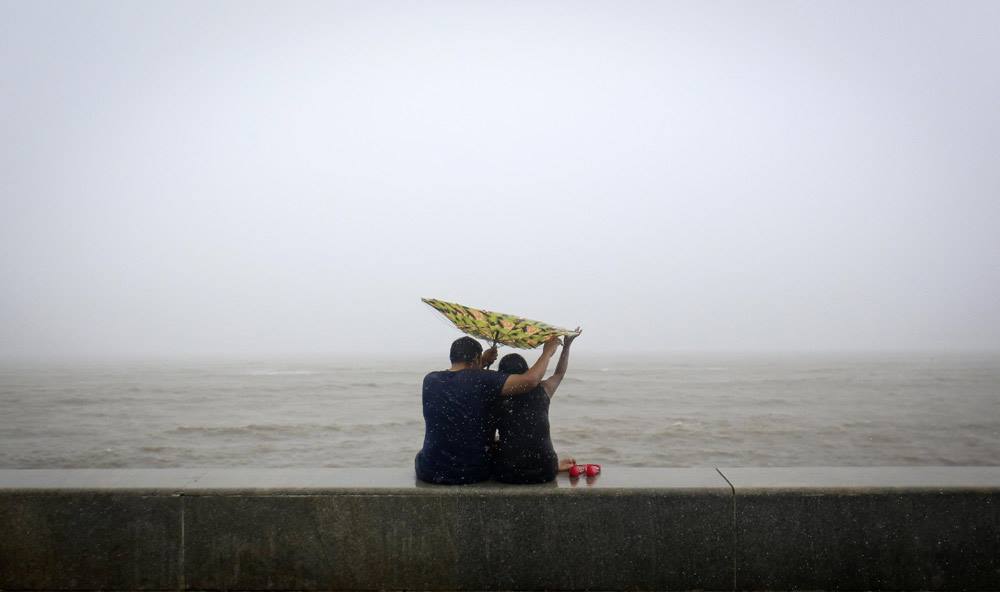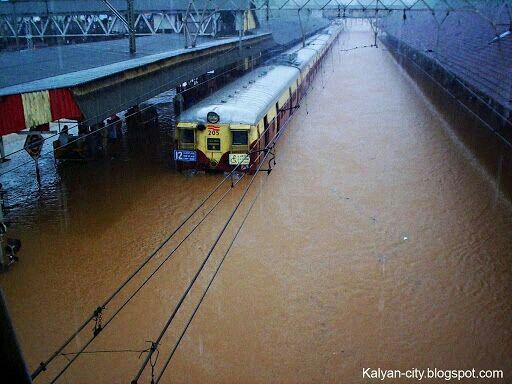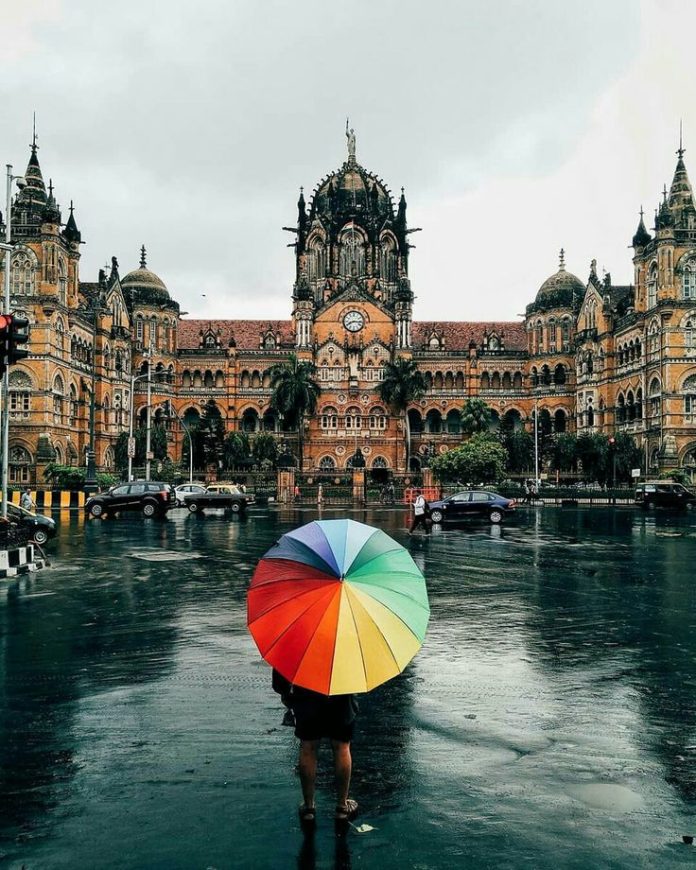As a Mumbaikar I can proudly admit to the fact that we romanticize the rains even before the monsoons could arrive. We eagerly await those days to enjoy some garma garam (hot piping) bhajiyas and some warm ginger tea. The sukoon (peace) a Mumbaikar feels witnessing the first rains, after almost surviving the unbearable heat this year is incomparable.
Mumbai known to be the ‘City of dreams’ where the nights are filled with peace and silence whereas, the days are filled with chaos and the soothing familiar sounds of the chaiwalas, the bartan walas, the vegetable vendors, trains and alas the pitter patter of the rains. Everything in Mumbai may feel like a cosy morning during the rains, but have you heard of the phrase “Not everything that glitters is gold”. The same applies to the rainy season where amidst this idyllic portrayal of romanticising Mumbai rains there seems to lie some potential drawbacks to it. Let’s have a look at what prompts residents of Mumbai to romanticize rainfall, and what drawbacks could accompany this sentiment.
Firstly we all can agree that this year’s summer has been the hottest since a few decades ago. With temperatures rising the highest to 39 degrees and with many regions and people facing severe heat waves and heat strokes, the need for the monsoon was much awaited.
Apart from this Mumbaikars romanticise the monsoon due to its mesmerising views and the skyline bathed in hues of pink, purple and orange after a downpour. They vibe to bollywood music hits such as Barso Re, Cham Cham, Baarish, Dheemey Dheemey and more which gives a more aashiqui (romantic) feel to the rains. These songs beautifully capture the rain with its soothing tunes and showcases how evergreen the fields look when it rains, portraying picturesque waterfalls and some of these songs also portray the idea to celebrate dancing joyfully in the rain with our partner or loved ones, encouraging our happy feet to move to the rhythm of the rain.
In Mumbai the rains hold a cultural significance as it is celebrated during the most auspicious festivals like Ganesh Chaturthi and Navratri. The city feels alive once again with the vibrant colours, music, and dance during these festivals, creating a sense of joy and unity among its residents. While for many it evokes nostalgic memories of their childhood- playing in the rain, making paper boats and spending time with their loved ones.

The monsoon transforms the city of Mumbai into a lush green paradise, washing away the dust and grime, giving it a fresh and rejuvenated look. The sight of raindrops glistening on leaves and flowers blooming makes it a sight for all to enjoy the bustling city without the dust pollution and to escape the heat.
Iconic Mumbai spots like Marine Drive, Bandstand, and Sealink become even more enchanting during the rainy season. Whereas social media platforms such as Instagram and Twitter become focus points as they transform into spaces for capturing and sharing images of the beauty of the rains and these scenic spots. From children playing gleefully in the rain to couples sharing heartfelt conversations under one umbrella, and families savoring hot tea and spicy vada pavs, this season has a charm that captivates everyone.

Many working people often opt for working from home during this time, while some take leaves to fully immerse themselves in the romanticism of the rains. Families and friends gather under one roof, sharing their joys and sorrows, making the most of this enchanting season.
Bollywood stars also have taken over Twitter, Instagram and Facebook to talk about the rains. Last year, Shraddha Kapoor posted a picture with a beautiful sea view and rains with her pet and captioned it with “Monsoon snuggles”, whereas actor Varun Dhawan, took to social media to share about him getting stuck in the traffic during the rainy season and stating “this is pretty wild” in regards to the flooded water splashing as his car goes on an adventure.
However despite its romantic appeal, the monsoon season has its own downfall. From water logging to disruption of the environment there are many drawbacks. Let’s have a look at some!
1. Water logging and Flooding:
Mumbai is known for its water logging and flooding during the monsoon season. The city’s inadequate drainage system and unplanned urban development worsen this problem, leading to traffic congestion, disruption of daily life, and damage to property. According to a report “The sea levels will rise and around 998 buildings and 24 km of road length shall be affected due to rains and flooding.”
On July 26, 2005, a cloudburst resulted in 944 millimetres of rainfall in 24 hours, killing 1094 people in Mumbai which was one of the deadliest days for the city. Many lost their loved ones in these floods. In 2023, IMD recorded the second highest rainfall at around 223mm since July 2015.
Mumbaikars often take to social media to express concerns about the city’s preparedness for the monsoon, last year people took over to twitter to complain about the flooding that took place in places like Wadala, Sion, Hindmata and King Circle within an hour and on the first day of rains. Whereas this year they took over to social media to express concerns about the city’s preparedness for the monsoon due to the ongoing coastal road and underground metro construction, which has left many roads dug up.
2. Health Issues:
The stagnant water resulting from heavy rainfall can become breeding grounds for mosquitoes and waterborne diseases like dengue, malaria, and leptospirosis. Poor sanitation and hygiene practices during the monsoon increase the risk of illness among residents. In many places, especially in the slums and underdeveloped places the dirty muddy water of the rains gets mixed with the drinking water this leads to various diseases and health issues amongst children and elders.
The city of Mumbai also sees a spike in the number of dengue, malaria, swine flu and hepatitis. According to reports in 2023, BMC (Brihanmumbai Municipal Corporation) stated that the city of Mumbai had recorded 353 dengue cases in June as compared with 119 cases in May and 90 H1N1 cases in the same month.
3. Infrastructure Damage:
With the city receiving non stop rainfall it leads to infrastructure damage, including roads, bridges, and buildings. Landslides and collapses are not uncommon and it poses major risks to public safety and leads to costly repairs and reconstruction efforts of not just the private sectors and governments, but also the poor and marginalized. People living in slums, low-lying areas, and coastal regions are most affected by the rains, since their homes, which serve as their primary source of refuge, are flooded with unclean rain and muck.
In 2023, many incidents of infrastructure damage were reported, with the tin roof of a building in Mumbai’s KanjurMarg suburb collapsing to a road getting caved in Mumbai’s Goregaon area, impacting traffic movement, there have been many such examples every year due to poor management and infrastructure work.
4. Disruption Of Services:
It is to be noted that, the average annual rainfall in Colaba, which represents South Mumbai, is 2,213.4 millimetres (87 inches), whereas in Santacruz, which represents Central and Suburban Mumbai, it is 2,502.3 millimetres (99 inches).
Thus, these heavy rains disrupt essential services such as public transportation, electricity, and communication networks. Train services are frequently affected, causing inconvenience to commuters and hindering economic activities. On the days of heavy rainfalls and possibilities of train services shut, many working people face the inconvenience of staying back in offices due to flooding and poor drainage systems.
Nearly hundreds of trains are cancelled in Mumbai everyday affecting the livelihood of the middle class working men and women, who rely on these locals to reach their jobs and earn their daily bread.

5. Economic Impact:
The monsoon can have a significant economic impact on Mumbai, particularly on industries like agriculture, tourism, and construction. Crop damage, reduced tourist inflow, and delays in construction projects can lead to financial losses for businesses and individuals alike. India’s average losses due to multi-hazard disasters are worth around US$9.8 billion, of which US$7.4 billion is lost due to floods alone.
Many poor people, especially the coastal region workers and fishermen, struggle when their boats and equipment are damaged by severe winds and rain. In the field of agriculture, acres of food crops are damaged due to floods and heavy rainfalls. This results in a loss of business for nearly 4-5 months, leaving these hardworking people without income from their primary livelihood.
Despite these challenges, the allure of the Mumbai baarish (rains) remains strong, and Mumbaikars continue to embrace the season with a mix of excitement and apprehension, knowing that along with its beauty, the rain also brings its share of hardships. The monsoon rains in Mumbai, often romanticised for their beauty, also bring significant challenges such as flooding and disruptions in daily life. While they offer relief from the summer heat and replenish water sources, prioritising safety is crucial during this season.
One must stay informed with weather forecasts and alerts, plan travel routes to avoid flooded areas, maintain hygiene to prevent waterborne diseases, and keep an emergency kit stocked with essentials. Stay connected with community members, offer support to those in need, and prioritise mental well-being amidst the gloominess that some may experience. By approaching the monsoon season with caution, preparedness, and mindfulness, individuals can navigate its challenges responsibly while still appreciating its unique charm.






























